Avi's Blog, page 2
July 15, 2025
2025 Summer Blog Series: Jolene Gutierrez
From Avi: As I have for the last three summers, (summer of 2024, summer of 2023, summer of 2022) I’ve invited 13 admired authors to write for my blog for the next three months. I hope you’ll tune in each Tuesday to see who answered this year’s question, which we hope provides you with inspiration. And by the end of the summer, you’ll have new authors to follow!
What’s your favorite strategy for encouraging young people to read?My favorite strategy for encouraging young learners to read is to help them find books that feel comfortable for them.
As a librarian, I’ve divided much of our fiction into genres. This allows readers to find sections that align to their interests—nature, sports, etc.
I also strongly encourage series books for readers because once they find a series that’s of interest and at the right reading level, they won’t have anxiety about trying to figure out what to read next.
I try to help readers understand that all kinds of reading counts. They can listen to audiobooks (hopefully with a print book so they can follow the text), they can read graphic novels, they can read magazines, they can read nonfiction, etc.
Finally, I give them permission to “cheat.” I do things like show them verse novels and point out how much white space is on the page or demo Choose Your Own Adventure books and tell them they don’t have to read the entire book. This gets reluctant readers excited, and once they start reading, they often don’t want to stop!
Particulars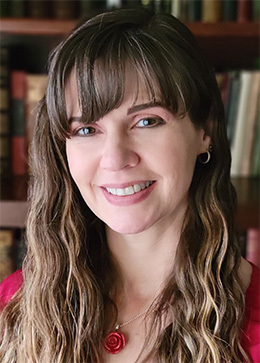 Jolene Gutiérrez Facebook Instagram Bluesky Home
Jolene Gutiérrez Facebook Instagram Bluesky Home  Mamiachi & Me
Mamiachi & Me co-written with Jolene’s son, Dakota Gutiérrez, and illustrated by Mirelle Ortega
Jolene Gutiérrez
grew up on a farm (exploring/connecting with the land and learning about the history, rocks, plants, and animals there) and now lives with her family and a variety of animals in a suburb of Denver. A school librarian since 1995, Jolene spends her days sharing children’s books and her nights writing them.
July 8, 2025
2025 Summer Blog Series: Pam Munoz Ryan
From Avi: As I have for the last three summers, (summer of 2024, summer of 2023, summer of 2022) I’ve invited 13 admired authors to write for my blog for the next three months. I hope you’ll tune in each Tuesday to see who answered this year’s question, which we hope provides you with inspiration. And by the end of the summer, you’ll have new authors to follow!
What’s your favorite strategy for encouraging young people to read?I often think about the types of stories I liked at the same age as my reader — stories that were fast-paced, or mysterious, or dramatic.
When I write, I try to move the story forward in a way that captures the reader. That can be accomplished in different ways: captivating opening lines, cliff hangers at the end of chapters, chapter openings that foreshadow something interesting is going to happen.
I also try to keep the story taut by avoiding long narrative sections of “telling.” Instead, I try weave into the dialog some of the information and descriptions about characters, the weather, or the setting.
I also attempt to give my protagonist (and my reader) enough tools to emotionally handle whatever happens at the end of the story, whether it’s a happy resolution, sad, poignant, or open-ended.
When writing, one of the goals on which I try to stay focused is this: I want the reader to feel compelled to turn the page, and if I’ve done my job well enough, to read the story more than once.
Particulars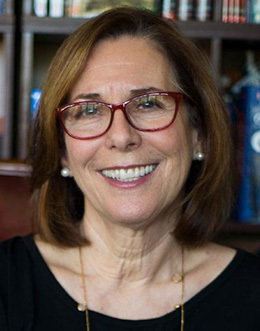 Pam Muñoz Ryan Facebook Instagram Twitter Home
Pam Muñoz Ryan Facebook Instagram Twitter Home 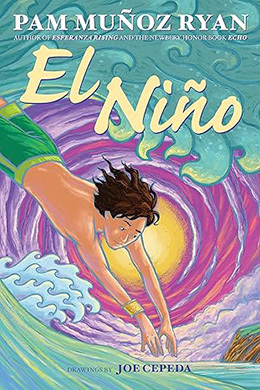 El Niño
El Niño Pam Muñoz Ryan is a New York Times Best-selling author, and the 2026 U.S. nominee for the international Hans Christian Andersen Award. She is the author of Echo, a Newbery Honor book and the recipient of the Kirkus Prize. She has written over forty books, including the novels Esperanza Rising, Becoming Naomi León, Riding Freedom, Paint the Wind, The Dreamer, Echo, Mañanaland, Solimar, and most recently, El Niño.
July 1, 2025
2025 Summer Blog Series: Suzanne Supplee
From Avi: As I have for the last three summers, (summer of 2024, summer of 2023, summer of 2022) I’ve invited 13 admired authors to write for my blog for the next three months. I hope you’ll tune in each Tuesday to see who answered this year’s question, which we hope provides you with inspiration. And by the end of the summer, you’ll have new authors to follow!
What’s your favorite strategy for encouraging young people to read? Growing ReadersHaving been a high school and middle school writing and English teacher for decades, I’ve had an up-close view of students and their reading habits. I’ve taught kids who couldn’t stop reading. Seriously, even during class. Just imagine the heartbreak of having to tell a student to “put the book away.” (Insert sobbing emoji here.) Once I corrected a student about this very thing, and it turned out she was reading one of my books, as in, one I’d written.

Several years ago, I taught a sixth grader who would climb the school’s stairs, book in hand. It’s no surprise this same girl was an excellent writer and all-around successful student. She was a reader, after all. I didn’t make her a reader; her parents did that. Talented, dedicated writers held her attention. Librarians recommended books. Her friends, too, probably. It took a village. It still does.
Over the years I’ve taught many students who were like this sixth-grade girl; they loved reading. Having taught in both public and private schools (secondary and middle grades), I can honestly say there were devoted readers everywhere. There were also students who proudly told me, “I hate to read.” Yes, I said proudly.

While I understand firsthand the demands of a busy classroom, I think fun is equally as important as rigor, and reading should be a part of that fun. Yes, we teach books in the schoolhouse, but students view these as assignments. The books teachers and school systems select are required and therein lies the problem: students have zero say in the matter.
Rebellion is a natural part of adolescence. No matter how thoughtful book selections for the classroom are (trust me, I get just how thoughtful), students will likely resist, at least to some degree. Do our curriculums build a passionate love for reading? I highly doubt it. So, what are specific strategies for encouraging young people to read? Make reading something kids look forward to. Make reading a respite from the daily grind of school life. Make it fun.
In the last several years of my teaching career, I implemented a reading requirement. The requirement? Students were to pick a book, any book, and read it. If they didn’t like the book, pick another book. Can I read a graphic novel? students would ask. Yep. Can I pick a book on animals? Yes. Can I read Diary of a Wimpy Kid (likely for the sixth or seventh time)? You betcha. Can I read my mom’s spicy romance novel? Ask your mom. If she says yes, then it’s fine by me.

Reading for pleasure, it’s called. Occasionally, I’ve had to remind myself of this, too. Reading. For. Pleasure. That meant I couldn’t judge students’ selections. I couldn’t judge if they ended up hating a book and wanted to switch. I wasn’t permitted to judge, even if this happened several times. My only goal? Encourage kids to find a book they enjoyed and give them time to read it.
To set this up in my classroom, I arranged visits to our school’s library so students could make book selections. I also walked students through the process of getting a public library card. In addition, I stocked my classroom shelves with books and categorized them for easy access. Once a month we spent the entire class period dropping everything and reading. D.E.A.R. is the acronym you most likely remember.
Did I grade papers, answer emails, plan tomorrow’s lesson during this time? Given the demands of teaching life, I was sorely tempted, but I did not. To model the behavior I desperately hoped for in students, I read for the entire class period, too. At the beginning of the school year, some students fidgeted, and it was obvious sitting still was a struggle for a few of them. “You’re building muscles,” I would tell them. “If you play an instrument or a sport, you practice, right? This is you practicing.”
Over time students did build their reading muscles. At the end of the school year, I asked parents for feedback. Nearly all said they’d noticed a difference in their children’s ability to sit and read. The mom of one reluctant reader said she walked into his room and “caught him reading.” It’s a little like that movie Field of Dreams— “If you build it, they will come.” If you make a space for reading, kids will read. And if adults occupy this reading space with children, we demonstrate that reading is a worthwhile pastime.
This endeavor to get kids reading extended beyond my classroom, but I tried to keep the nuts and bolts simple. I created a basic reading log to help students keep track of their reading and meet the goals of the assignment. At the beginning of the school year, I started small, 10 days or so per month of reading for pleasure, preferably in 15 to 20-minute, uninterrupted sessions. Our classroom reading days counted for two sessions.
By the spring, we were up to 20 days of 15 to 20 minutes per session. I kept extra reading logs in my classroom and online. Students were free to get a second copy if they lost one. However, a few days before the log was due, I removed them from online and from our classroom to avoid last-minute stragglers who hadn’t actually read anything beyond our D.E.A.R. Day. While reading for pleasure was the goal, there were benefits for doing the assignment (easy points and stickers, anyone?) and consequences grade-wise if students didn’t do the assignment.

Students were required to sign an honor statement beforehand. Parents signed it, too. On the reading log, students wrote (yes, by hand) a brief summary of the book, basic information on the writer, and a few sentences about whether or not they’d recommend this book to classmates. In addition, there was a calendar so students could keep track. I even kept a log of days remaining on my white board in case students forgot or lost track of time.
During classroom D.E.A.R. Days, I would sometimes start with a quick video on the benefits of reading for pleasure. At the beginning of the year, I sent emails home to parents to explain the benefits of lifelong reading habits, complete with statistics. The goal was simple: get kids to read for fun and work toward parent buy-in. When you tell parents their kids will be happier, smarter, kinder, healthier, and more successful and you back this up with research, you aren’t likely to get pushback.
In addition to the statistics on reading benefits, I would also educate my students about the benefits of developing a growth mindset. We even watched Carol Dweck’s YouTube video so students could hear from the author herself. In case you aren’t familiar, Dweck is the author of Mindset: The New Psychology of Success.
According to Dweck, “The power of yet suggests that learning is a journey, not a destination.” Basically, I wanted students to apply the growth mindset to reading. With effort and practice, they had the power to improve their ability to sit and read for an extended period of time.
By middle school many kids come to the classroom with a fixed mindset. I’m good at math but not English, say, or I hate reading or I’m not popular (athletic, smart, etc.). If we teach children that they can strengthen their muscles in all sorts of ways, reading included, it gives them hope. In fact, it gives all of us hope.
When my own children, ages 35, 25, and 23, were growing up, my husband and I read to them. We read every single night. Our children grew up reading with us and watching us read. We went to the library. We purchased books. We talked about books. Books were a source of joy in our household, but this was not the case for me as a kid. This is where the record scratches. A writer who didn’t grow up a reader? Yep, that’s me.
My mom was not a reader. Neither was anyone in my family. There were very few books in our home, though we did have a set of Childcraft and Encyclopedias. No one in my family had been to college. Money was always an issue. I was not a reader. I was not a lover of books. I was not what we’ve come to expect from writers: a child who grew up with her nose in a book.
What changed reading for me (and very likely the course of my life) was a family friend. Her name was Margaret Harris, and she was elegant in every way. She went to our church, became friendly with my mother, and her husband was our family physician. Every Christmas Margaret gave me a book.
To be honest, I didn’t actually read these books, but I loved owning them and seeing them on my shelf. I loved the idea of reading them. Even so young I somehow understood books were important. What made me a reader? Margaret’s act of kindness, regular visits to my elementary school’s library, a couple of classroom teachers who read aloud to us every day after lunch, a small tape recorder into which I told my own stories, these things made me a reader. And a writer.
One teacher, one parent, one grandparent, one librarian, one family friend can encourage a reader. And if the child in your life or your classroom claims to hate reading, teach them about Dweck’s research on growth mindset. Tell them, “You don’t like reading. Yet.”
Particulars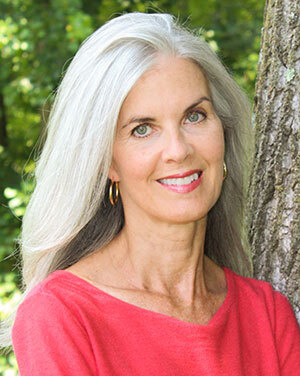 Suzanne Supplee Facebook Instagram
Suzanne Supplee Facebook Instagram 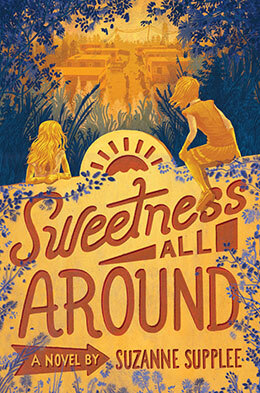 Sweetness All Around
Sweetness All Around Suzanne Supplee is the author of the middle grade novel, Sweetness All Around, and three young adult novels. She earned a bachelor’s degree from Southern Illinois University and a master’s in creative writing from Towson University. Suzanne taught creative writing for a number of years at a magnet high school in Maryland, work for which she was recognized as an Alliance for Young Artists and Writers Gold Medal Portfolio Educator, a Silver Medal with Distinction Educator, and a University of Chicago Outstanding Educator. When Suzanne isn’t grading papers or obsessing over her current work-in-progress, she is playing with her dogs, Birdie and Gus.
June 24, 2025
2025 Summer Blog Series: Dr. Padma Venkatraman
From Avi: As I have for the last three summers, (summer of 2024, summer of 2023, summer of 2022) I’ve invited 13 admired authors to write for my blog for the next three months. I hope you’ll tune in each Tuesday to see who answered this year’s question, which we hope provides you with inspiration. And by the end of the summer, you’ll have new authors to follow!
What’s your favorite strategy for encouraging young people to read? Creating a Safe Harbor for StoriesMy favorite strategy for encouraging young people to read is based on work I did once, long ago, as head teacher of a small school in England; and then what I learned from my time as a volunteer working with children at an “asylum seekers center” in Germany. In both places, I created a safe harbor environment, where children could share the joy of reading together, without judgment.

In England, it was easier. I was head teacher, after all — and the parents were worried that their children weren’t reading enough or well enough. My solution was to institute a “reading time” every afternoon.
All “my” children sat together in a loose circle, choosing where they wanted to sit, and choosing whatever book they wanted to read. It was a mixed age group — ranging from six year olds to twelve year olds; I made sure we had books at different reading levels; and I encouraged the older children to read to the younger ones (in part so that the older children who weren’t confident of their reading skills would have an excuse to pick up a book that was at their reading level but that they might have worried was “babyish”).
As the weeks wore on, I encouraged the children to share a few words about what books they were reading. They were allowed to bring books from home or choose one from the classroom and take it home if they liked. Within a month, reading time was treasured by the students — and their parents, who were ecstatic at the remarkable change in their children’s reading habits.
At the asylum seekers center in Germany, I had a harder time. I was a volunteer, so I had to be careful what I said and how I acted. The center itself was rather a bleak place — a converted army barracks! There was an Alsatian at the gates and a barbed wire fence around the compound. In the long hallways were posters with information on how to get help if there was domestic violence and that sort of thing.
The classroom itself had shabby second-hand furniture — but the teachers had gone to great lengths to brighten up the place with cheerful decorations. They were incredibly dedicated, and they loved the children. They spent hours with them, not only in the classroom, but also taking them on field trips, to swim and cycle and walk nearby.
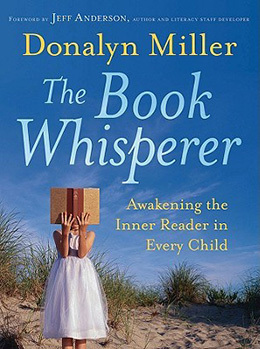 Books, however, were not a priority. They were locked away in a small anteroom. When I asked why the books were inaccessible, I was told it was because the children would not handle the books well! I’d read Donalyn Miller’s The Book Whisperer and I marshaled some of her persuasive arguments. I also learned a great deal from Pernille Ripp’s comments, and I tried to impress the teachers with her wisdom, too. Soon, I was allowed to put some books on a table and invite the children to peruse them.
Books, however, were not a priority. They were locked away in a small anteroom. When I asked why the books were inaccessible, I was told it was because the children would not handle the books well! I’d read Donalyn Miller’s The Book Whisperer and I marshaled some of her persuasive arguments. I also learned a great deal from Pernille Ripp’s comments, and I tried to impress the teachers with her wisdom, too. Soon, I was allowed to put some books on a table and invite the children to peruse them.
The next challenge came from the children themselves. As refugees, they had all been through a great deal in their young lives, and it took a while before they could establish mutual respect, without comparing themselves to someone else or mocking others in the class for their reading choices! I began to read aloud to the group and engaged them in interactive activities that centered them. I encouraged them to make up their own stories or talk about or sing a song or do a drawing or craft inspired by the books we read.

After the group activity, the children would take turns, choosing a book and coming in pairs or alone to another room, where I created a safe harbor environment, playing soft, calming music, and listening to them read aloud, helping as needed, or reading aloud to them in some cases — without any judgment. And just as the rather privileged children in my British school had done, book love began to grow in these children who were living in such a harsh climate. They loved their time in the “reading room” where they could read books of their choice together, where they could spread and share their love for books with one another, without any pressure to demonstrate reading prowess.
So that’s my favorite reading strategy: to create a safe harbor where young people can dip into the ocean of story on their own terms.
Particulars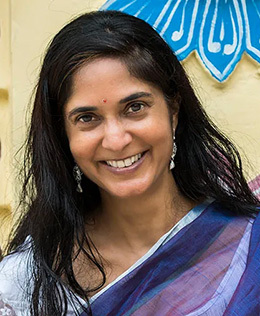 Dr. Padma Venkatraman
Dr. Padma Venkatraman [photo: Connecticut Head Shots]
Facebook Instagram Bluesky_logo_ffffff .fil0 {fill:#FFFFFF} Threads Linkedin Home Safe Harbor
Safe Harbor Dr. Padma Venkatraman is the internationally acclaimed author of Born Behind Bars, The Bridge Home (a Global Read Aloud), A Time to Dance, Climbing the Stairs and Island’s End, which have secured over 20 starred reviews and sold over ¼ million copies. Her latest novel, Safe Harbor, was called a “must read” in a starred review from School Library Journal. She is the winner of WNDB’s Walter Dean Myers Award for Outstanding Children’s Literature and numerous other prestigious awards. Discover more at Padma’s website, Diverse Verse (which she founded), or arrange a visit.
June 17, 2025
2025 Summer Blog Series: Gary Schmidt
From Avi: As I have for the last three summers, (summer of 2024, summer of 2023, summer of 2022) I’ve invited 13 admired authors to write for my blog for the next three months. I hope you’ll tune in each Tuesday to see who answered this year’s question, which we hope provides you with inspiration. And by the end of the summer, you’ll have new authors to follow!
What’s your favorite strategy for encouraging young people to read? How to Encourage a Kiddo to Read
How to Encourage a Kiddo to Read In middle and high school, I played — or tried to play — trumpet for the school bands. It was not my first commitment, or even my second — and I suppose it showed. When I think back on those years now, a half-century later, I’m not sure I can name or even remember a single piece of music that we played for all the concerts in which we were forced to participate. I do remember long rehearsals, sometimes on weekends, and the boredom of listening to the clarinets, or the flutes, or the percussion, working on their ensemble play while everyone else waited — me, with an open book on my stand until the trumpets were called upon to try their hands at a few measures.
Except for one piece.
I do not recall the name of the band leader; I wish I did. He was not our regular conductor. But at the beginning of one rehearsal, he handed out photocopied sheets to us of handwritten music for a piece he had composed. On the clear staffs of the sheets, he had hand drawn the notes for his music, which was a piece he was submitting for publication, and he needed our band to create a recording. It was still untitled, it was that fresh, but I remember the music was meant to simulate the response of astronauts who had landed on a planet and were encountering its native life, which tended to squelch and glug and gurgle through the wet and muddy landscape, a sound simulated by a recording he had made with electronic sounds. Most of the rehearsal was about matching the timing of the band to the timing of the electronic sequences—which turned out to be impossible and which led to our eyewitness experience of a musician adapting his score on the spot.
We never did hear the response of the publisher to the piece, but for me, at least, it didn’t matter. I was impressed and thrilled by the idea that one of our teachers was composing his own music and sending it in to become a published piece. I had never met anyone who would dare to do such a thing — he was that serious, that committed about his art. I wondered, looking at the hand drawn notes, if I would ever do something like that — not write a piece of music, but write a work of fiction that I would dare to send in some day. Could I ever be that committed about my own art? Would I dare to disturb the universe in the way that that conductor had done?

I understand that there are many effective approaches to encouraging middle grade and YA reading, and that many of these can go to war against the prevailing cultural lethargy that has allowed kids to believe that reading is unimportant. (A neighboring kiddo of mine who has gone on to become the president of his real estate corporation once bragged to me on the day of his high school graduation that he had made it through the last four years without reading a single book. He meant to impress me.) But I wonder truly if one of the huge enticements to reading might simply be to model it — that kids might be encouraged to read because they see the adults in their life reading: a parent, a grandparent, an aunt, a teacher, the employer encountered in a high schooler’s first job, the religious instructor, the neighbor on her porch, the carpooling adult or the school bus driver who throws a paperback on the dashboard, the scout leader, the cafeteria lady waiting between shifts, the principal, the librarian, the pastor or rabbi.
I recall my fourth-grade teacher, Mrs. Harknet, who kept books on her desk that were not teacher books, aimed at the job. They were novels, and she read them during breaks — or during our reading — and sometimes she’d chuckle, or laugh out loud, or go to the board and write down a word or a phrase she’d just read. She obviously loved reading, and it made me—a poor reader in fourth grade — want to love it too. I remember Mr. Ainsley, our world history teacher, reading with a lead pencil in his mouth, which he would sometimes retrieve to underline some passage. When we asked what he was reading, he would always answer “Herodotus,” or “Thucydides,” or “Tacitus,” and sometimes he would stop and read passages written two thousand years ago — and he made them thrilling.
My band teacher’s commitment to his art was an inspiration to me, and I thought of him when I began to dare to try my own hand at something I might someday send to a publisher. And it is unquestionable that the readers whom I met along the way, committed readers who understood and enjoyed the art of reading, were models — are models — to my own commitment to reading, which is the basis for my love of writing. So when I hear these days that high school students don’t read Catcher in the Rye anymore because — wait for it — it’s too long, or that The Great Gatsby is now being taught by having kids read the first two chapters, followed by a summary of the rest of the book, how can anyone not recognize that something terribly important has been lost: the possibility that someone might be taken up by the language and plot and characterization of a great novel. It is almost as if we cannot imagine that that might be true.

Do we want our kids to read? Model it. Let them see you read. Create spaces for your kids to read, and don’t take that time yourself to fill in busywork; read yourself. Bear witness to your reading: Let them know what you’re reading and why you like it. Take up the technique that I’ve seen many teachers use these days of listing the book(s) you’re reading underneath your signed name in any email you send. Lend books generously. Surprise a kiddo with a suggested title: “I just finished this over the weekend and I think you might really like it.” Carry the book you’re reading openly, if only to rebuke those now ascendant in our culture who disdain reading. Dare to believe that this small, seemingly tiny act might change a kid’s life. It did for me.
Wordsworth, in his autobiographical “Prelude,” suggested that “what we have loved, others will love, and we will teach them how.”
Teach them how to read, because you love to read. Really, how else do you think it’s going to happen?
Particulars Gary D. Schmidt
Gary D. Schmidt 
Gary’s recent book
Gary D. Schmidt is the bestselling author of The Labors of Hercules Beal; Just Like That; National Book Award finalist Okay for Now; Pay Attention, Carter Jones; Orbiting Jupiter; the Newbery Honor and Printz Honor Book Lizzie Bright and the Buckminster Boy; and the Newbery Honor Book The Wednesday Wars. Gary lives in rural Michigan.
June 10, 2025
2025 Summer Blog Series: Karen Cushman
From Avi: As I have for the last three summers, (summer of 2024, summer of 2023, summer of 2022) I’ve invited 13 admired authors to write for my blog for the next three months. I hope you’ll tune in each Tuesday to see who answered this year’s question, which we hope provides you with inspiration. And by the end of the summer, you’ll have new authors to follow!
What’s your favorite strategy for encouraging young people to read?
Sure, we can visit classrooms, chat online, and answer fan mail, but I think the most important thing we writers can do to encourage young people to read is write the best books we can, books that entertain and amuse young readers, comfort them, support them, challenge them, and help them see beyond the borders of their own experience. We can give them books worth reading.
Particulars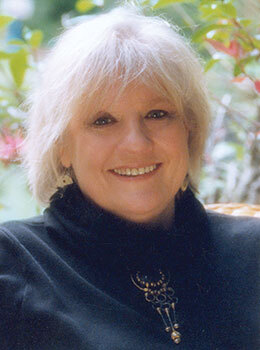 Facebook Bluesky_logo_ffffff .fil0 {fill:#FFFFFF} Home
Facebook Bluesky_logo_ffffff .fil0 {fill:#FFFFFF} Home 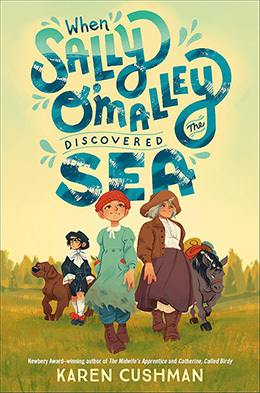
Karen’s recent book
Karen Cushman is the author of The Midwife’s Apprentice (winner of the 1996 Newbery Medal), Catherine, Called Birdy (a Newbery Honor book), The Ballad of Lucy Whipple (winner of the John and Patricia Beatty Award), and several other prize-winning novels published by Clarion Books. Her newest book is When Sally O’Malley Discovered the Sea, set in Oregon. Karen lives and writes on Vashon Island in Washington state.
June 3, 2025
2025 Summer Blog Series: Dan Gutman
From Avi: As I have for the last three summers, (summer of 2024, summer of 2023, summer of 2022) I’ve invited 13 admired authors to write for my blog for the next three months. I hope you’ll tune in each Tuesday to see who answered this year’s question, which we hope provides you with inspiration. And by the end of the summer, you’ll have new authors to follow!
What’s your favorite strategy for encouraging young people to read?
I tell them this — If you read something you’re interested in, you’ll get interested in reading.
When I was a kid, I hated to read. I thought it was boring and hard to do. Then, when I was about ten, I became a baseball fan. Suddenly I wanted to know everything about baseball, so I had to read about it. So I tell kids there’s something out there that you’re interested in. Maybe it’s sports, or cars, or airplanes, or whatever. There are books on that subject. Lots of them. You should check them out.
Because I was a reluctant reader myself, I relate to those kids and I know what they like to read and what they don’t like to read. I boil it down to seven secrets to writing stories that kids will want to read …
GET TO THE POINT. Hook the reader on the first page. Better yet, on the first sentence. NO PADDING. Delete extra words. They only confuse readers. If there’s a paragraph, sentence, scene, or character that isn’t important to the story, get rid of it. USE THE BARE MINIMUM OF DESCRIPTION. Cut unnecessary adjectives. Don’t tell readers what the weather is like, what kind of clothes people wear, or what their face looks like. Who cares? It doesn’t matter. Let the reader use his or her imagination. EACH CHAPTER SHOULD BE A STANDALONE STORY with a beginning, a middle, and an end. And the ending of each chapter should make the reader want to know what happens next. MAKE IT FLOW. The text should flow effortlessly from one word to the next, one sentence into the next, one paragraph to the next, and so on. The reader should never have to read something twice to understand what I’m saying. TAKE READERS ON A ROLLER COASTER RIDE. Give them something exciting, then calm them down a little. Then give them something else that’s exciting. Keep doing that. People crave novelty. If a roller coaster didn’t go up and down, it would be just a boring train ride.At the end of a roller coaster, it takes you back to where you started. I think people like stories that come full circle. There’s something satisfying when you get taken on a journey and then back home on the last page. It’s like baseball. The batter’s goal is to make it all the way around the bases until he ends up back where he started—scoring a run at home plate.
GIVE THEM A SURPRISE ENDING. It doesn’t have to be happy. It just has to be satisfying in some way and provide closure.To sum up, I try to write stories that I would like to read myself, and I figure kids will want to read stories like that too.
Also, I have the brain of an eight-year-old, so that helps.
Particulars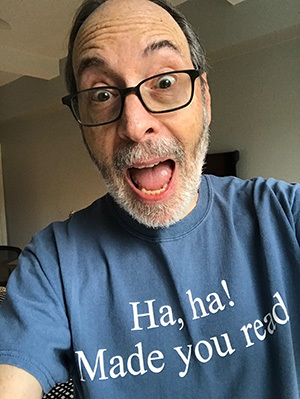 Dan Gutman Facebook Instagram Bluesky_logo_ffffff .fil0 {fill:#FFFFFF} Home
Dan Gutman Facebook Instagram Bluesky_logo_ffffff .fil0 {fill:#FFFFFF} Home 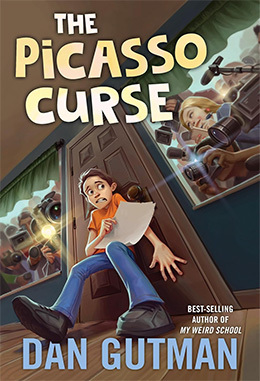
Dan’s newest book, available 9/2/25!
New York Times best-selling and award-winning author Dan Gutman has written more than 190 books for readers from kindergarten through middle school. Dan’s My Weird School series includes 100+ titles, and has sold more than 35 million copies globally over the past 20 years. Dan also is the author of the best-selling Genius Files series, the Baseball Card Adventure series, and many more. When he’s not writing books, Dan loves to ride his bike, play pickleball, throw Frisbees, and explore New York City where he lives with his wife Nina.
May 27, 2025
2025 Summer Blog Series: Avi
Over recent years, I have turned my Summer website over to friends and colleagues to share their experiences and views about something we all share in common. This year, I’ve asked them to offer their thoughts as to how to encourage young people to read.
Here are my ideas.
What’s your favorite strategy for encouraging young people to read?
People, young and old, like to talk about their former teachers. “She was so nice.” “He was so kind to me when … ” “I loved the way she talked about history.” “I never liked poetry until … ” And so on.
But the phrase I have truly heard most often is, “She used to read to us. At least one chapter a day. Everybody loved it. My favorite book was … I’ll never forget it.”
The key point is that the people who say these things have become readers.
There is something about being read to, the shared experience, the comfort of a soothing voice, the excitement of simply being absorbed in a story, the physical pleasure (if it’s a parent who is doing the reading) of sitting close, of absorbing a story and affection at the same time, that’s captivating. And often life-changing.
My mother used to read picture books to us when my siblings and I were kids. I can tell you about those books in great detail after some seventy years plus. It was magical night after night.
With my older boys, I (and my wife) read the entire Laura Ingalls Wilder series one year in sequence — we didn’t just enjoy the books, we talked about the events as if we were there, and as if the characters were part of our lives. Though we were young and old, it was a shared experience.
Many a kid has told me (teachers too) that having read one of my series book, kids go on and on and read the others.
Not every book, no matter how well written, is best suited for reading aloud. What works? Books with shorter chapters. Books with cliff-hanging endings. Books with suspense. Books full of surprises. Funny books. Books with a graceful flow of language. Fantasy books that speak of fantastical events. Books with great characters. Books that tell of experiences your audience can relate to.
When I first began to be called upon to read from my work, I signed up for a course in acting, which focused on learning how to speak. What pace do you use? Speak too fast, and people can’t absorb what you are saying. How do you pitch your voice? Folks can listen to a lower voice with greater comfort. How will folks understand you? Make sure you speak unusual words with great clarity and use body language and facial expressions to suggest meaning. When do you pause in your reading? When it’s most exciting. How to stop — mid-reading — and explain what needs to be explained. New or hard words? Preview them with listeners before the reading. Make your own reading dramatic. And if you want to laugh (or cry) go with it. Your listeners will join you. They will love your emotions.
And, not beside the point, being read to helps a young person write better. They internalize your readings and consciously or unconsciously apply them to their work.
Finally, not beside the point, you, the reader, will enjoy reading out loud as much as your listeners.
Particulars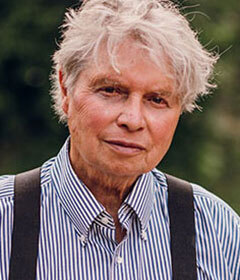
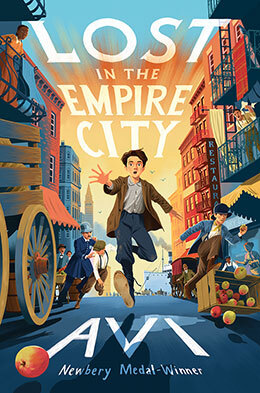
Avi’s newest book!
Subscribe to this blog to be notified when a new article is posted (in right column).
Facebook Instagram Blog Bluesky_logo_ffffff .fil0 {fill:#FFFFFF} HomeMay 20, 2025
Read a Good Cookbook Lately?

Have you read a good book lately? A cookbook?
For many of us, this is the kind of book we read more often than not. Sometimes on a daily basis. But, in my experience, we rarely talk about them as books, how they are written, or if they are indeed readable. Who are the good writers of cookbooks? To be sure, it is the recipes that are important. Is it important if they are written about well?
As the one who does the cooking in my household and enjoys it, I read cookbooks. Sometimes my bedtime reading will be about what I will cook the next day, especially if it’s to be a gathering of friends. As I write this, I know that in a couple of days my adult son and his girlfriend are coming for dinner.
What shall I cook? What cookbook shall I turn to? Who likes what? Who won’t eat what? Go to an old known favorite? Be daring?
Over my years, cookbooks have radically changed. Recall the old Good Housekeeping cookbook, and you’ll remember that it simply provided recipes. No doubt, good ones. But pick up the recently published A Very Chinese Cookbook by Kevin and Jeffrey Pang, and besides the recipes, you’ll find pages of informal information about the culture of Chinese food, ingredients, and ways of eating, as well as personal stories about the writers, who are father and son.

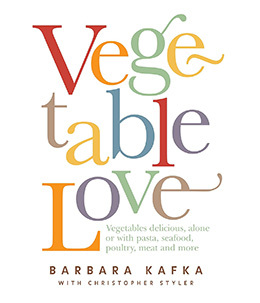
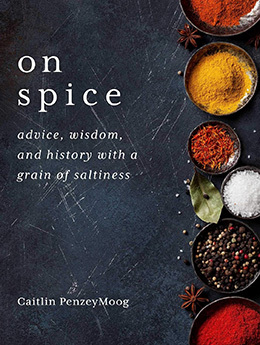
Also, in cookbooks these days, there are photographs. Lots of them. Enticing! It’s become very common. You even see credits for “Food Stylists.”
(In that context, I once learned that plaster of Paris (hardened) is a good substitute for photographed whipped cream — but, please, only in photos.)
Turn to one of Ina Garten’s books (the “Barefoot Contessa”) and you’ll find all kinds of engaging chat about the social side of eating a meal. Consider Barbara Kafka’s Vegetable Love and you’ll discover more about individual vegetables than you ever thought it was possible to know. One of my favorite cookbooks is On Spice: Advice, Wisdom, and History with a Grain of Saltiness. By Gaitlin PenzeyMoog. Fascinating.
Even online recipes have good introductions by cooks. I’m partial to the New York Times cooking section, where you’ll find good writing by Sam Sifton and Melissa Clark — and I think — good recipes.
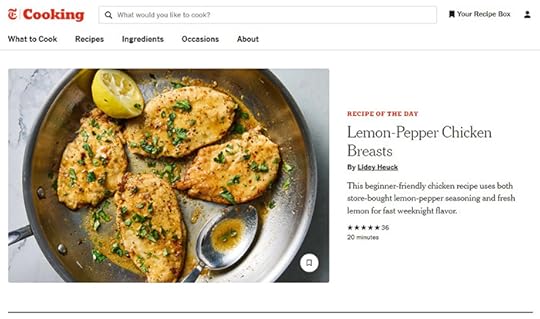
There is a real skill in food writing: deep explanations of the food, its origins, culture, and techniques, as well as the prep. To be sure, it is highly descriptive writing, but it often tries to suggest the experience of eating the food. If ever there were a book of promises, a cookbook must fit the bill.
To be clear, good writing does not ensure a good recipe. No more than a good recipe brings on good writing. But when you have both, the pleasure is amplified — when you read and when you eat.
Now, think about the last novel you read. Surely the (human) characters must have eaten. Yet, generally speaking, very little attention is paid to the food. I have been guilty of that in my writing. Eating is just assumed.
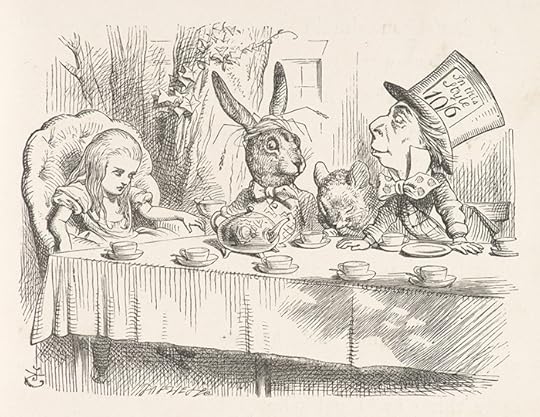
The Mad Hatter’s Tea Party from Alice in Wonderland by Lewis Carroll. Illustration by John Tenniel. (in the public domain)
In novels, now and again, there is a gathering around food. (Do consider the tea party in Alice in Wonderland!) Or a dinner is part of the plot. Rarely is there much focus on what is eaten. That said, in mysteries, eating poison is often what is dished up. Still, as we all know, what we eat, how we eat, and even when we eat, can tell us much about an individual’s character.
So, I invite my readers to share the title of a work of fiction in which food has a vital and descriptive part. Or the best-written cookbook you know.
We’ll eat your words.
May 13, 2025
A House without Books
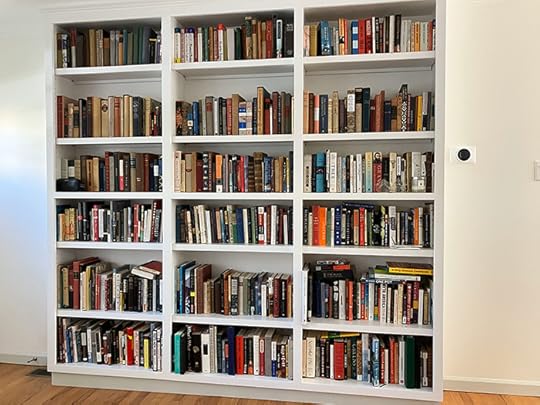
All my life I have lived with and in books.
[“Book” is an Old English word (pre-1150 AD) and seems to be of Germanic origin.]
Books were in my parents’ house when I was born. I was encouraged to have my own library when I was a kid. Before I could make a living as a writer, I was a librarian. No surprise, books are in my home today.
I’m not sure why I keep books I have read (or intend to read) around me. They are on my walls, by my bed, and on my desk. Thus, the saying, “A house without books is like a body without a soul.” (Attributed to Cicero, the Roman philosopher and statesman, 106 BCE-43 BCE) has great meaning for me.
Maybe it’s as simple as “No furniture so charming as books.” (credited to Sydney Smith — an English writer, and Anglican cleric.). Or is it because, as the poet Ezra Pound once said, “Literature is news that stays news.”
It’s not just me. I recall an interview I once heard in which a writer (I no longer recall the name) was reminiscing about his father, an educator. It seems in later years his father became blind. The son recalls that his father would wander into his library and touch his books. When he came upon one he remembered, he would stand there, hold the book in his hands and recall its contents.
I have only to glance at a favorite book on a shelf and I can remember it (and the pleasure) it gave me. “A reader lives a thousand lives before he dies … The man who never reads lives only one.” George R.R. Martin.
When I watch the nightly news, there is often a backdrop of books behind the speaker. It could be a fake image, but when I look at those books, they are often real. Sometimes, discreetly displayed, a copy of a book written by the person being interviewed. I find it interesting to know what the speaker has read, is reading, and is writing. In the same fashion, when I visit someone’s home, and there are books about, I consider the phrase, “He is like an open book.” Merriam-Webster has it that “The meaning of AN OPEN BOOK is a person or thing that is easy to learn about and understand.”
When I moved from the city to my country home, I gave away some four thousand books to used book dealers. I’ve never liked selling them. On the other side of things, I admit that I buy books because I enjoy seeking them out, having them, and reading them. And, oh yes, writing them.
“You don’t have to burn books to destroy a culture. Just get people to stop reading them.” Ray Bradbury
When I am working on a text, on a computer, I often print what I have written because having the words on paper helps me better sense what I have done. Now and again, when printing, I even format the pages so they truly look like a book.
In short, as Jorge Luis Borges once said, “I have always imagined that Paradise will be a kind of library.”
Avi's Blog
- Avi's profile
- 1703 followers



